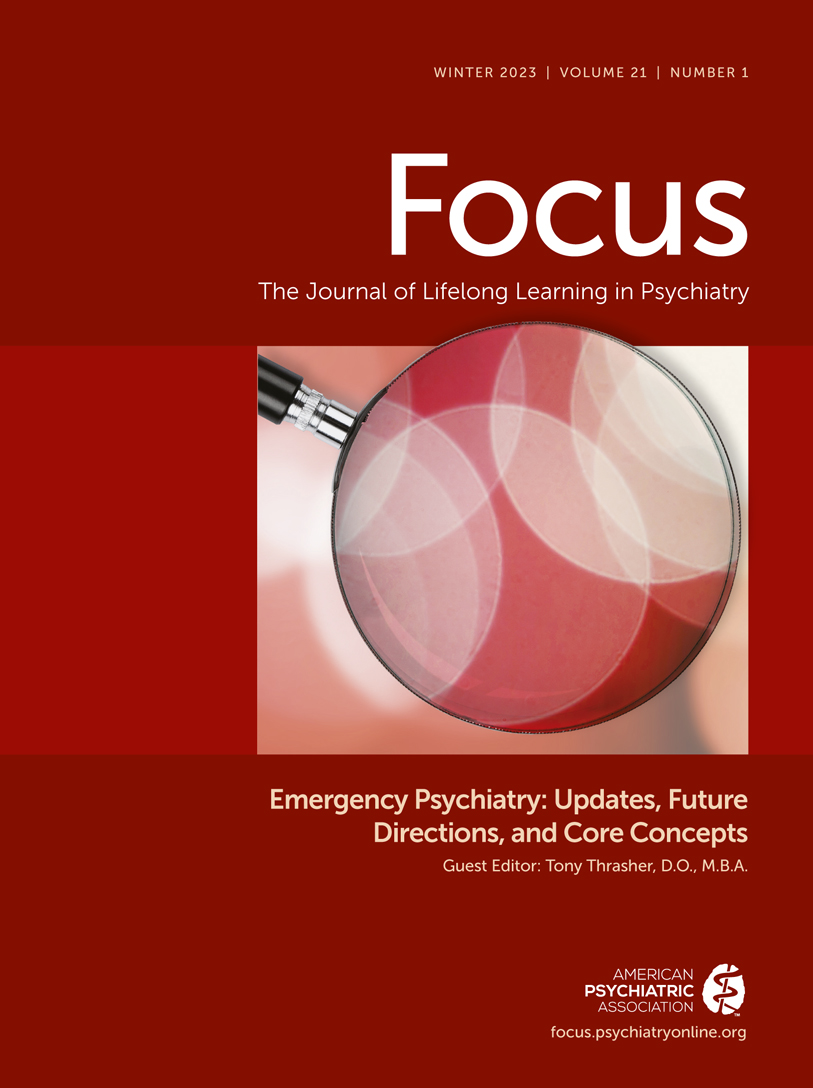Contemporary Practices for Medical Evaluation of the Psychiatric Patient in the Emergency Department
Abstract
Although emergency department (ED) visits for patients with mental illness are frequent, medical evaluation (i.e., “medical screening”) of patients presenting with psychiatric complaints is inconsistent. This may largely be related to differing goals for medical screening, which often vary according to specialty. Although emergency physicians typically focus on stabilization of life-threatening diseases, psychiatrists tend to believe that care in the ED is more comprehensive, which often places the two fields at odds. The authors discuss the concept of medical screening, review the literature on this topic, and offer a clinically oriented update to the 2017 American Association for Emergency Psychiatry consensus guidelines on medical evaluation of the adult psychiatric patient in the ED.



